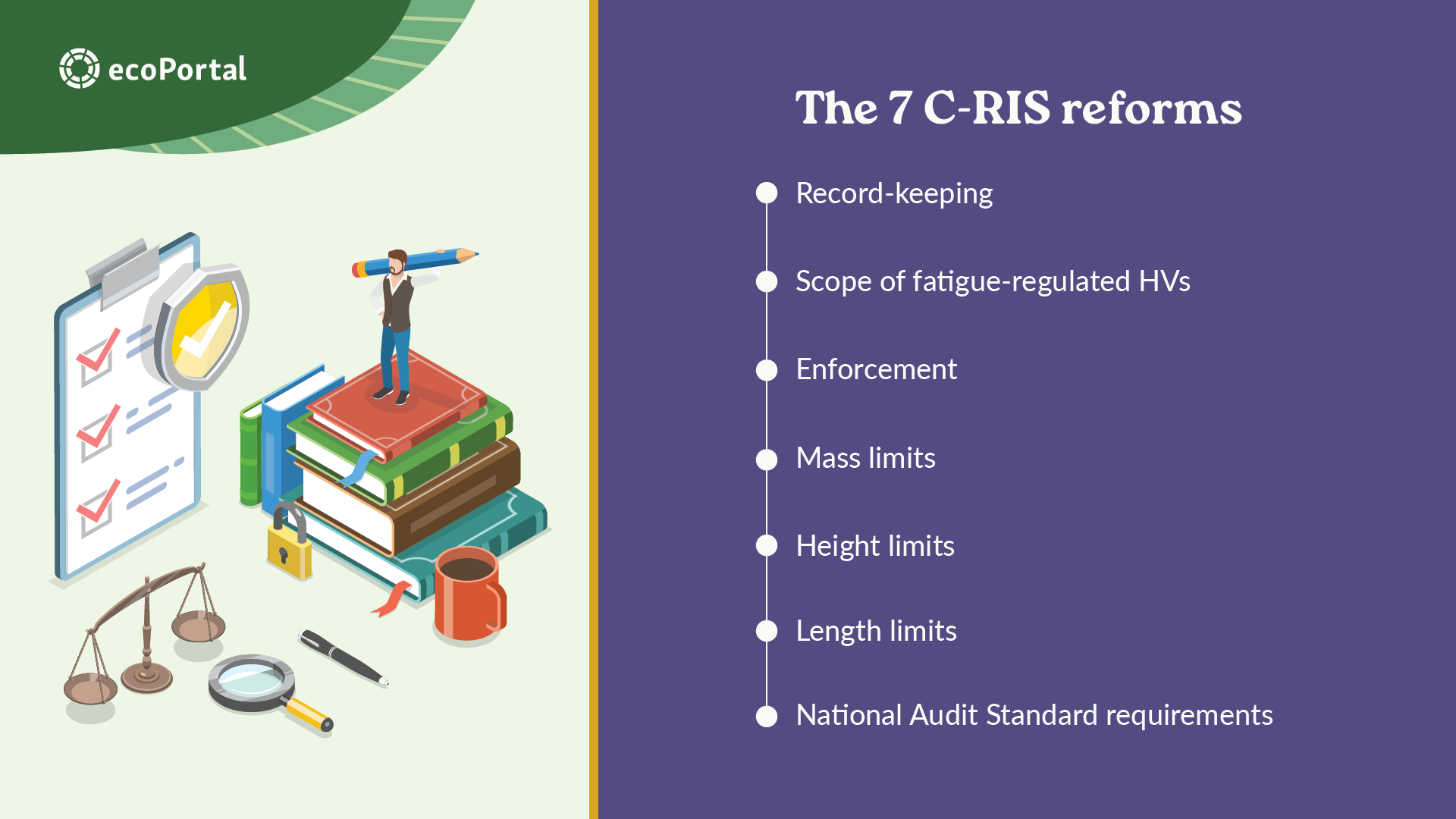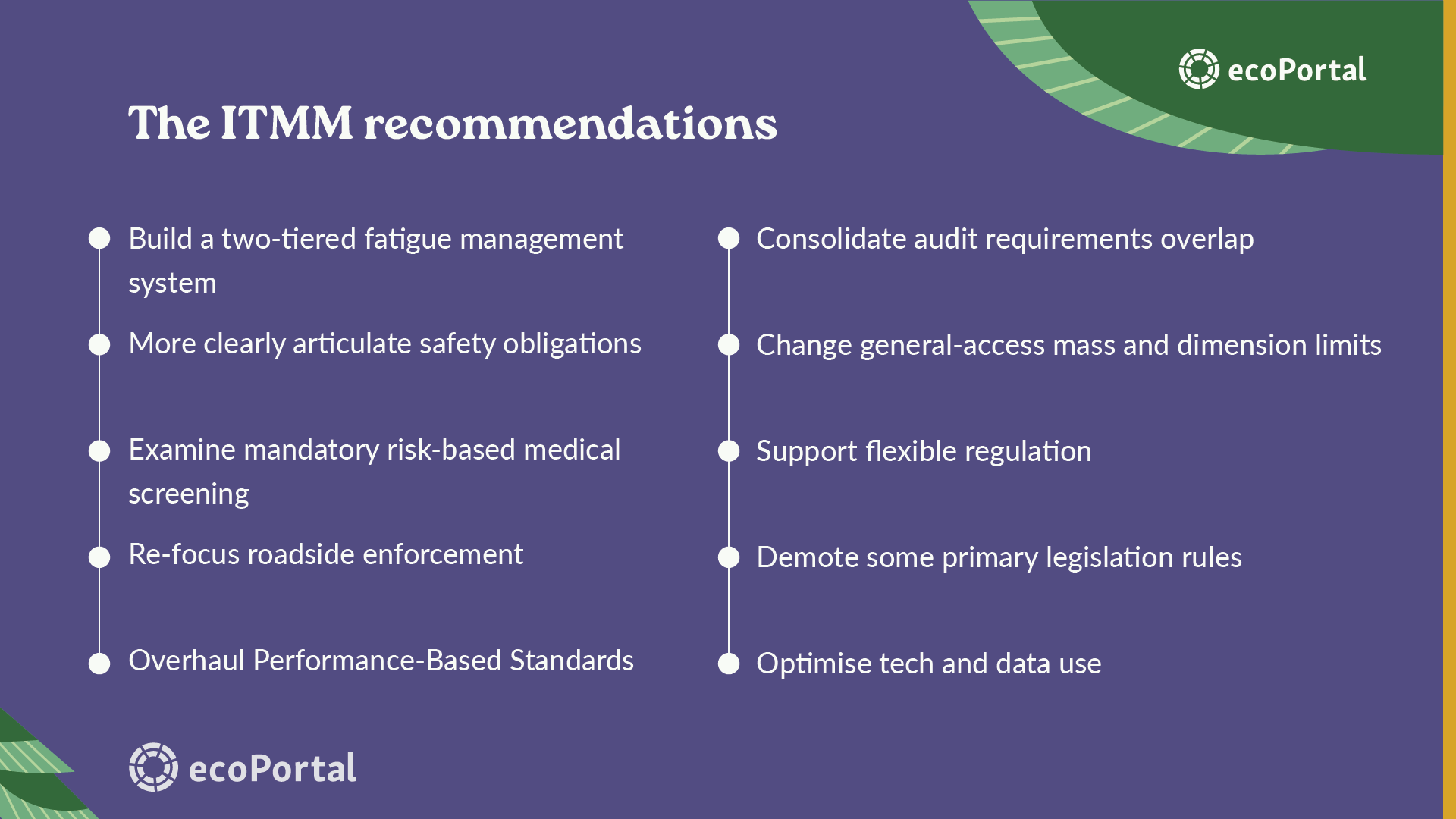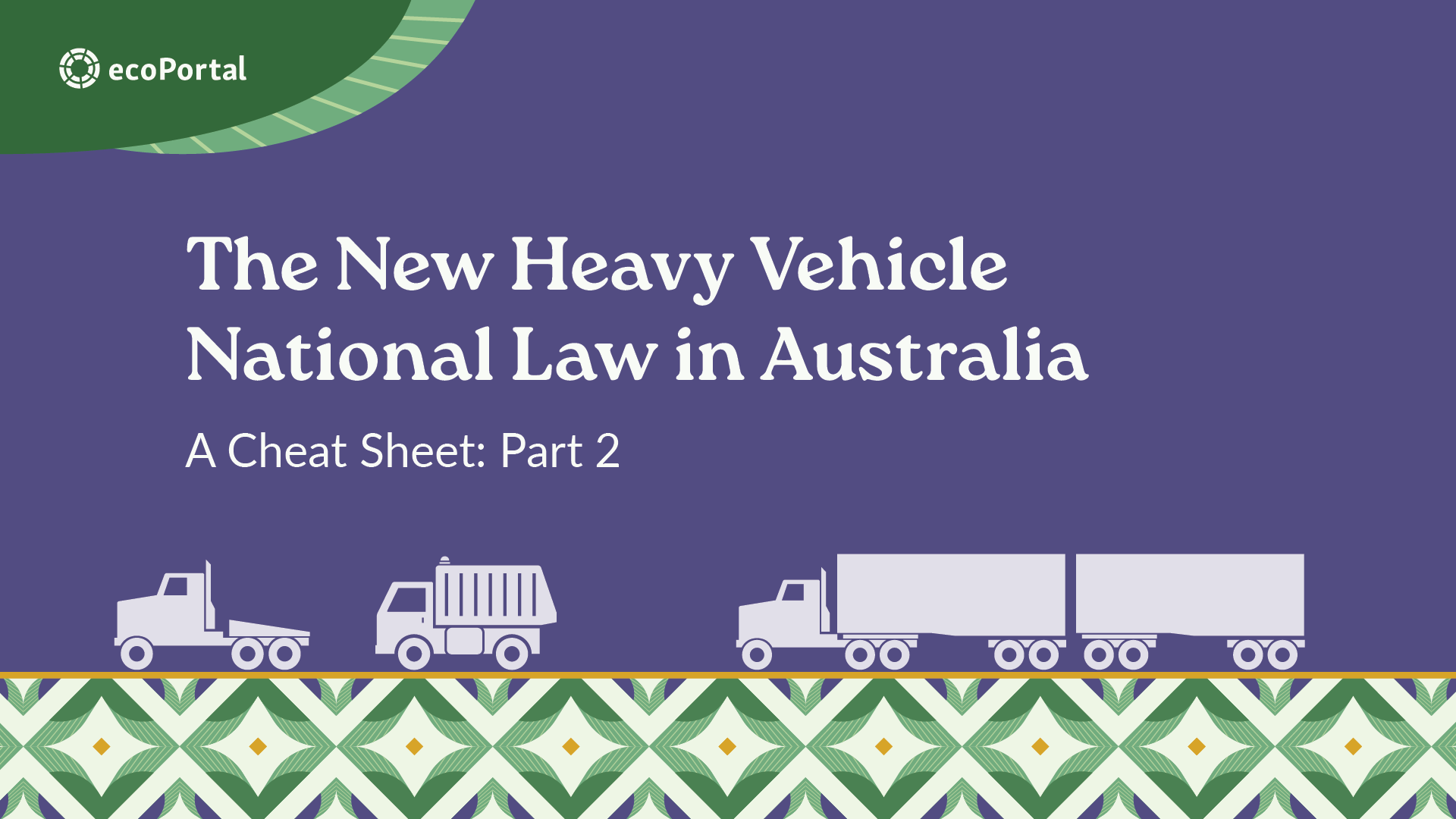Welcome back to your guide for all things Heavy Vehicle National Law! We’re glad to have you with us for part 2. This time we’ll be giving you the Cliff’s Notes on the C-RIS, which covered some of the things the D-RIS overlooked. Don’t know what these letters mean? Jump back to part 1 to get up to speed. For those already in the know, read on…
C-RIS summary part 1: the problems
For the trained eye, there were a few glaring exclusions from the D-RIS:
1. Fatigue management reforms
2. As-of-right road network access
3. Enhanced operator assurance
That’s where the C-RIS comes in.
Within fatigue management, the C-RIS considers how the current law contributes to drivers driving while fatigued, asking in particular if:
1. Current fatigue enforcement and compliance focuses on following rules more than solving fatigue
2. Current record-keeping requirements are too onerous on the drivers
3. Prescriptive work and rest requirements are inflexible
4. Current controls focus on long-haul interstate journeys but not short-haul risks
To most of these questions (barring the last), the people largely say yes.
Within access, the C-RIS considers changing HV mass and dimension limits for as-of-right road access, asking in particular if:
1. Safety improvement rates haven’t been reflected in expanded general-as-of-right access
2. Red tape to access creates undue regulatory burden for operators looking to operate above general-as-of-right access limits
3. The current access regime is overly complex and opaque
4. Prescriptive vehicle combinations is a missed productivity opportunity
In these questions, the people are more divided.
Within enhanced operator assurance, the C-RIS notes that there is room for improvement in general confidence in current audit standards, asking if:
1. Audits can be improved to increase reliability and confidence
2. Auditor competency requirements may not fit into the new National Heavy Vehicle Accreditation Scheme Safety Management System requirements
3. Accreditation scheme alignment across Australia is inconsistent
The people are generally less responsive to these questions.
Get fresh H&S insights weekly

C-RIS summary part 2: the reforms
To address these questions, the C-RIS offers seven reform areas, each with accompanying options.
The first three areas speak to fatigue management, while reforms four, five, and six are about as-of-right road access limits. Reform seven rounds things off with food for thought on the National Audit Standard accreditation.
Reform area 1: record-keeping
Options to streamline record-keeping:
1. (base) Keep current driver record-keeping requirements
2. Remove duplicate requirements and streamline offences
3. Remove administrative process requirements and offences
Reform area 2: Scope of fatigue-regulated HVs
Changes to which vehicles should be fatigue-regulated:
1. (base) Prescriptive requirements for >12 tonnes only, work diary exemption for drivers doing local work
2. Same requirements as base, full written work diary requirements for >12 tonnes
3. Same requirements as base, “lite” work diary requirements for lower-risk operations
4. Base requirements for all HVs, full diary for all operators
5. Base requirements for all HVs, base work diary exemption
6. Base requirements for all HVs, “lite” work diary requirements for lower-risk operations
Reform area 3: Enforcement
Options to address minor work, rest, and administrative offences:
1. (base) Current enforcement of work and rest breaches and administrative offences
2. Limit timeframe for issuing a breach infringement
3. Implement a risk profile for breaches
4. Enable a review of fines for “trifling” administrative offences
5. Driver defence for minor administrative errors
6. Formal warnings for administrative offences about work diaries
7. Formal education option in lieu of a fine for administrative offences
Reform area 4: Mass limits
Options to increase mass limits (or leave them alone):
1. (base) Current state of General Mass Limits (GML) and Concessional Mass Limits (CML), while still maybe including a Euro VI provision
2. Increase current GML by 5%; new GML replaces current CML; no additional allowance for Euro VI vehicles
3. Increase current GML by 5%; new GML replaces current CML; additional mass allowance for Euro VI vehicles
What’s a Euro VI vehicle, you might ask? Well, Euro is a vehicle emissions standard. VI (6, for you non-Romans) has made a huge difference to Europe’s air quality over the past decade, and is now the bare-minimum standard for most so-called developed countries—except for Australia and New Zealand, who are still getting there while other countries are moving on to VII.
Reform area 5: Height limit
Options to increase the current HV height limit, or keep it the same:
1. (base) Height limit is 4.3 metres for general-access vehicles (GAVs)
2. Height limit increased to 4.6 metres for GAVs
Reform area 6: Length limit
Options to increase the current HV length limit, or keep it the same:
1. (base) Current length limit is 19 metres for GAVs
2. Limit increased to 20 metres for GAVs
Reform area 7: National Audit Standard requirements
Options to introduce National Audit Standard (NAS) requirements:
1. Base (proposed): NAS is prescribed in primary law only (no regulatory requirements)
2. NAS is prescribed in primary law and included in regulations

Ken Kanofski’s ITMM report
As mentioned earlier, Kanofski shared the findings from his industry stakeholder consultation process with the ITMM in August 2022. The final report brought together 11 multilateral meetings, 2 all-day workshops, and 37 individual stakeholder meetings, all together consulting 80 individuals representing organisations and jurisdictions.
Backed by Infrastructure and Transport Ministers, this research sought to resolve:
1. Unresolved policy positions
2. New HVNL timeframes, processes, and cost-benefit analysis (CBA)
3. Systemic barriers to reform
4. Ways to improve safety and productivity
And test out policy proposals.
The report’s recommendations included:
1. Build a two-tiered fatigue management system, including more flexibility for operators who demonstrate strong safety practices
2. More clearly articulate safety obligations for drivers, with specific obligations and penalties for off-road parties
3. Examine mandatory risk-based medical screening of drivers
4. Re-focus roadside enforcement towards deliberate and systemic failures that pose a real threat rather than administrative infractions
5. Overhaul Performance-Based Standards to encourage safer, more productive vehicles
6. Consolidate the overlap between different assurance audit requirements, which is currently significant
7. Change general-access mass and dimension limits, provided the change is backed up by CBA and regulatory impact analysis
8. Build flexible regulation that supports business who want more prescriptive measures as well as those that aren’t into that kind of thing
9. Demote many primary legislation rules to regulation and elsewhere
10. Optimise tech and data use by developing standards, protections, and certifications

Next steps
Between the beginning of this revision process and the release of the C-RIS, four years passed. While a child born the day the revisions officially started could be walking and talking by now, the HVNL seems to have a wee ways to go before it can run.
Many with major skin in the heavy vehicle game have indeed noted the significant amount of time the process is taking, but that's not the only criticism they have for the proposed changes. Some are of the opinion that the legislation goes too far in aspects, while others decry the legislation in other aspects for not going far enough.
Next up, though, these critics got their chance to state their piece on the public record, in a public response submission process that closed in November 2023. What did they have to say? Find out in part 3, coming soon.








